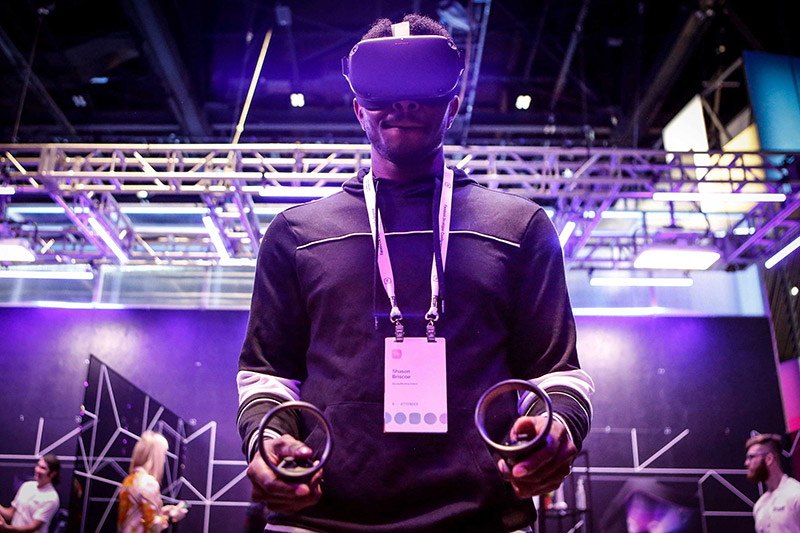科技公司崛起靠烧钱?大错特错!

|
今年5月底,网约车巨头Uber提交了上市以后的首份财报,披露了亮眼的财务数据,季度营收达30亿美元。但麻烦在于,营收数据背后的成本达40多亿美元。 Uber的竞争对手Lyft也在今年上市,5月早些时候,Lyft上市后的首份财报中披露的亏损数字更大¬——净亏损达11亿美元,营收为7.76亿美元,净亏损数字几乎达到2018年同期2.34亿美元净亏损的5倍。(也算是一种进展。)特斯拉情况差不多,2006年以来累计亏损66亿美元,然而在投资者推动下,公司市值现已达到400亿美元。 企业想在新经济时代中成功就要大手笔花钱,几乎已经变成公理;新兴市场正在迅速演变为赢家几乎通吃的局面,初创企业别无选择,只能尽快抢占市场份额,挤垮竞争对手。企业还得在技术、营销和顶尖人才方面三管齐下,因为毕竟苹果、亚马逊和谷歌等行业大佬都是这么做的。 然而事实并非如此。 这就是《财富》杂志的肖恩·塔利回顾苹果、亚马逊、谷歌(如今叫Alphabet)和Facebook历年财报之后的发现。“事实证明,成功的科技公司早年需要大量烧钱的假设不仅是错误的,而且是错得离谱。” 他写道。 肖恩计算了各巨头的净现金流(运营活动产生的现金减去资本支出),发现谷歌显然从未有过负现金流,令人震惊。与此同时,苹果和Facebook也只是短期曾经出现过入不敷出。就连最常被称为“靠花钱赚钱”之典范的亚马逊,也远比今天的准“独角兽”们节俭得多。即使净现金流为负时,亚马逊的烧钱率与总销售额相比也不算大。 正如肖恩的出色分析提供的证明,商业领域中数学最能打破传统智慧。另一个例证便是《财富》杂志7月刊的封面故事,由阿里克·詹金斯撰写有关虚拟现实沉浮及能否再次兴起的精彩故事。五年前,Facebook斥资30亿美元收购虚拟现实头盔生产商Oculus时,许多技术专家似乎都认为,虚拟现实将是全球娱乐的下一步发展方向。当时,风险资本家争相为虚拟现实初创企业提供融资,仅2016年便投资逾8.5亿美元,结果却是市场因为消费者兴趣寥寥而萎靡不振。 该例子同样可以用数学分析:根据一位行业观察人士的说法,去年Oculus旗舰版头盔的出货量仅为35.4万副,仅为同期索尼PlayStation 4游戏机1700万台出货量的2%。 为什么会失败呢?阿里克解释道,部分原因是设备笨重又价格高昂。但真正的限制因素是,缺乏充分理由吸引人们花高价购买然后戴上笨重的头盔:应用不够好玩,很少有玩家高频使用。 然而,情况或许终将改变。根据阿里克的报道,虚拟现实已经实现升级换代,不少开发人员也为该技术找到了一些企业层面颇具吸引力的用途。 毕竟,虚拟现实领域确有可能存在大机会。但建议先读一读阿里克的专题报道,再决定要不要投身其中。(财富中文网) 本文另一版本登载于《财富》杂志2019年7月刊,标题为《跟着金钱走》。 译者:冯丰 审校:夏林 |
At the end of May, when Uber filed its first earnings report as a public company, the ride-hailing titan revealed it had an impressive $3 billion in revenue for the quarter. Trouble is, it had spent just over $4 billion to produce it. Earlier in that month, Uber’s road rival Lyft, which also went public this year, revealed an even bigger splotch of red ink—$1.1 billion worth, on $776 million in revenue—in its debut quarterly report. That net loss, as it happens, was nearly five times the size of the $234 million hole it had dug in the same period of 2018. (Progress.) And then there’s Tesla, which has lost a cumulative $6.6 billion since 2006. Investors, for their part, are currently rewarding it with a $40 billion market cap. It has become all but axiomatic that to succeed in the new economy, companies have to spend with abandon; in burgeoning marketplaces that quickly morph into winner-take-most, startups have no choice but to grab whatever share they can, as fast as they can, and box out the competition. They have to triple down on technology, on marketing, on top-tier talent because, after all, that’s what Apple did. And Amazon. And Google. Except, dear readers, it wasn’t. That’s what Fortune’s Shawn Tully discovered when he went back through years of financial statements for Apple, Amazon, Google (now Alphabet), and Facebook. “It turns out the assumption that successful tech companies burned lots of cash in their youth isn’t merely wrong—it’s staggeringly wrong,” he writes. Shawn calculated the free cash flow (cash generated from operating activities minus capital expenditures) of these giants back to their pre-behemoth days and found that Google—quite strikingly—had apparently never been cash-flow negative. Apple and Facebook, meanwhile, had just fleeting periods when they lived beyond their means. And Amazon, which is most-often cited as the exemplar of “spend money to make money,” was also far more frugal than today’s unicorn-chasers realize. Even in the periods when its free cash flow was negative, the burn rate was modest compared with total sales. In business, as Shawn’s terrific analysis proves out, nothing bursts the conventional wisdom quite like math does. And Exhibit B in this maxim is this issue’s cover story—Aric Jenkins’s wonderful tale of the rise and fall and … could it be? … rise anew of virtual reality. Five years ago, when Facebook shoveled out $3 billion to buy VR headset maker Oculus, it seemed to many of the technoscenti that virtual reality would be the next dimension for global recreation. Venture capitalists rushed to finance VR startups—investing more than $850 million in 2016—only to see the market fizzle for lack of consumer interest. Again, here’s some math: Last year, Oculus shipped just 354,000 units of its flagship headset, according to one industry watcher—which is equivalent to about 2% of the 17 million or so PlayStation 4 consoles Sony sold during the same period. Why the fizzle? The clunky gear and the lofty price points played a part, Aric explains. But the real limiting factor was the lack of a good reason to wear that clunky gear and pay those prices: The applications just weren’t engaging enough to absorb players day in and day out. That may at last be changing, however. As Aric reports, VR has upped its game—and a number of developers have found some compelling enterprise-related uses for the tech, too. It just may be that virtual reality is the real thing, after all. But I’d suggest you read Aric’s feature before you take that first plunge. A version of this article appears in the July 2019 issue of Fortune with the headline “Follow the Money.” |











